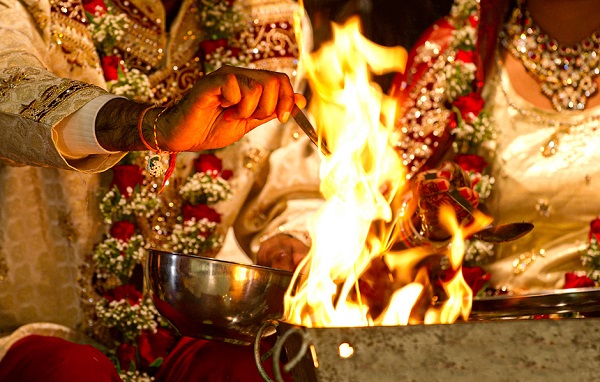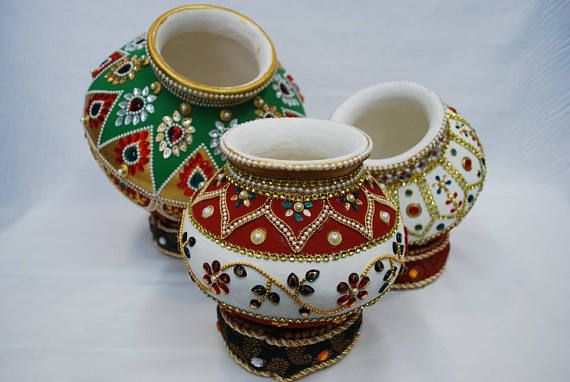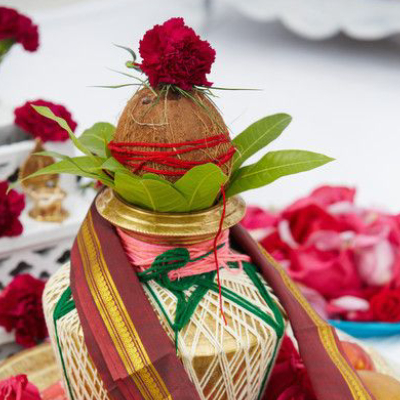
Marriage is about celebrating Love and Partnership. This celebration, especially in a Hindu marriage involves a lot of important elements attached to it. In specific, the Sanctum Sanctorum or Mandap, as its called, where the actual wedding ritual happens is considered the most vital of all places during the wedding. Each and every element used to decorate a Mandap carries unique reasoning to it. A selected number of people such as the bride, the groom, their respective families and the priest conducting the wedding is mostly the occupants of this auspicious space.

It is strongly believed by the Hindus that anything that is sacred of auspicious has to be performed within the four walls in the house and its premises. Thus the concept of Mandap was introduced in Hindu weddings. Again this gained prosperity in earlier days when hygiene was a big concern and conducting any rituals in the open grounds was not advisable. But it’s the opposite now, where rituals and auspicious functions are not more done in enclosed spaces. Huge Wedding Halls, convention centers, beaches, and open grounds are used to conduct grand affairs like weddings.
Irrespective of the venue chosen, a Mandap is undeniable and the center space that takes up most of the attention. Here are some well-researched significances of the Mandap being part of the whole wedding ritual in a wedding hall. Find out more about the elements of wedding hall.
Significance of a Mandap Design in a Wedding Hall
A four-pillared structure raised in the form of a canopy-forming the sacred ritual space in traditional Hindu weddings is called the Mandap. Traditionally the Mandap was designed of wood, sugarcane, bamboo or a younger banana stem. Holy Pots are stacked near the four pillars and a canopy conceals the top of the Mandap.

According to Hindu traditions and Vedic culture, there is no ritual performed without a meaning attached to it. So goes for the design of the mandap in a wedding hall. Every décor done has a meaning attached to it.

Reasons Behind Different Elements Involved in a Wedding Hall Mandap
- Moving to the Next Stage in Life
Every pillar that is raised in the Mandap symbolizes the different stages in life as per the Vedas. The four are Brahmacharya, Grihastha, Vanaprastha, and Sanyasa. According to the Vedas, the groom steps from being a “Brahmacharya” in becoming a “Grihastha”, meaning a householder. Additionally, the pillar also represents the 4 most important aspects of life as a human, such as Dharma, Artha, Kama, and Moksha.
- Five Elements Salutation
The Mandap in the wedding hall is considered as the incarnation of the Universe in which the bride and groom are married and enter the next stage in their life. Near the four pillars are placed grandly decorated pots, which are meant to signify the elements Earth, Water, Air, and Fire. The top of the canopy that points above is the symbol of Space.

- The Holy fire
The holy fire acts as the witness or ‘saakshi’ to the whole ritual. In Vedas the fire or Agni represents pureness and holiness. Thus, the sacred fire is always raised at the commencement of all auspicious rituals.

Significance of the Holy Pot in a Wedding Hall
Every wedding hall mandap has a Kalasha or the Holy pot made in silver or in brass, depending on the status of the family, is set before the couple getting married. The Holy pot is meant to signify the human body. By presuming the Ganga, the holy river, water is filled into the pot. This is the significance of the body being filled with a soul that is pure in the Hindu customs. The Kalasha is then topped with a coconut that signifies the mind of the human decorated with five leaves from the mango tree representing the five senses. Placement of the Kalasha in rice on a plantain leaf signifies success, wealth and productiveness.

Image credits to WeDid
Thus this overall “Poorna Kumbham” is a representation of the body, mind, and soul along with the five senses in one of the couples getting married.
It is important for the bride and groom to understand the reasoning behind the design of the Mandap, the rituals and also the significance of the Kalasha or the Holy pot. The décor is enhanced in such a way so as to be incorporated into the present trends.
